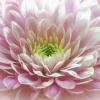XT30ii - Beginner lens for safari photography?
-
Similar Content
-
Posts
-
If weight and size are the main issues, I would say the new XE-5 is the camera for you. I don't entirely agree with the idea that such a camera is too small for long lenses. The assembly is supported with the left hand (assuming you are right handed) under the lens at the point of balance.
-
By GreenGuy33 · Posted
Welcome, dear visitor! As registered member you'd see an image here…
Simply register for free here – We are always happy to welcome new members!
-
Welcome, dear visitor! As registered member you'd see an image here…
Simply register for free here – We are always happy to welcome new members!
-
Somehow my shutter fell off my X-a5. On Amazon, there are a number of camera shutter buttons for Fuji cameras. My first thought was that I could just purchase one of these and be ready to go. But after checking these out, it appears that these shutter buttons are for cameras with a screw hole in the shutter button and the X-a5 doesn't have this kind of shutter and even if it did, the shutter is gone. I called Fuji and they wouldn't even discuss it or accept my photo above to view it, they said I had to send it in which I'm not ready to do. One more update... I just stuck a pin through the center opening of the small center hole and the shutter activated and took a picture. Seems like there could possibly be something to attach there, like a replacement release to remedy this. Based of my explanation and what you can see on this scan, can someone advise me what I need to purchase or what I need to do to resolve this? Thank you.
Welcome, dear visitor! As registered member you'd see an image here…
Simply register for free here – We are always happy to welcome new members!
-



Recommended Posts
Join the conversation
You can post now and register later. If you have an account, sign in now to post with your account.
Note: Your post will require moderator approval before it will be visible.